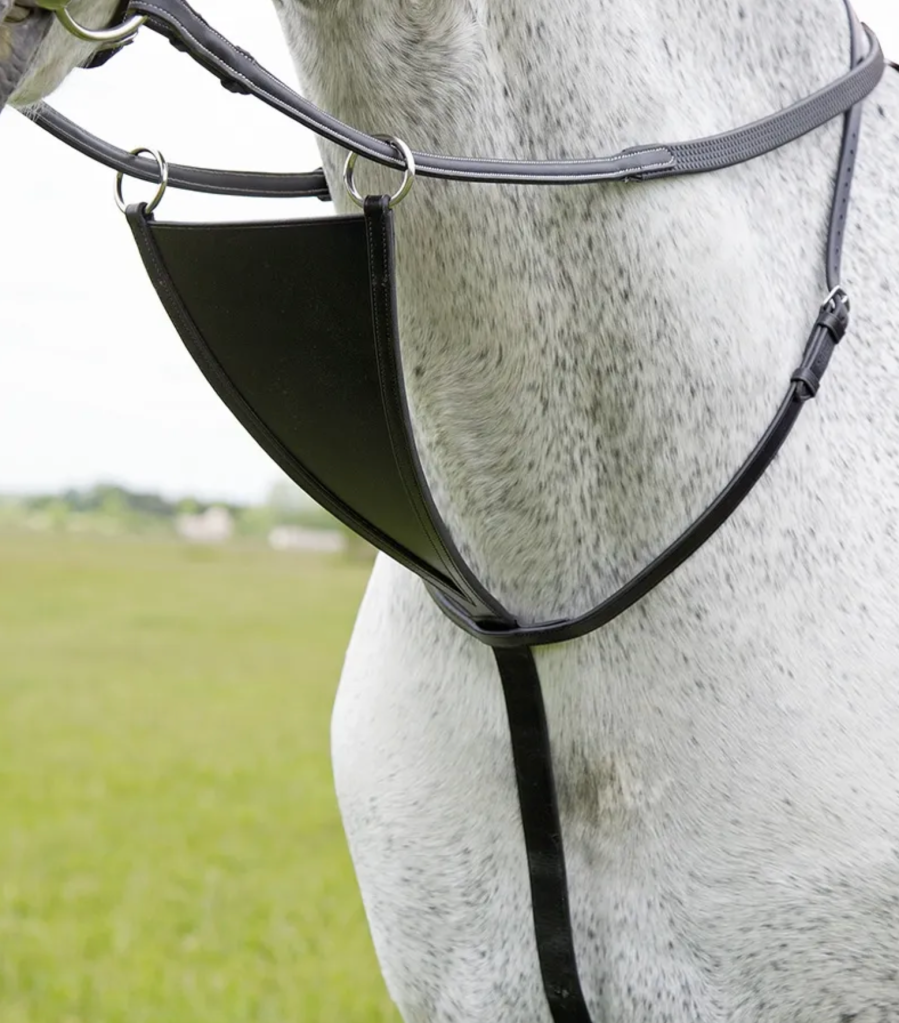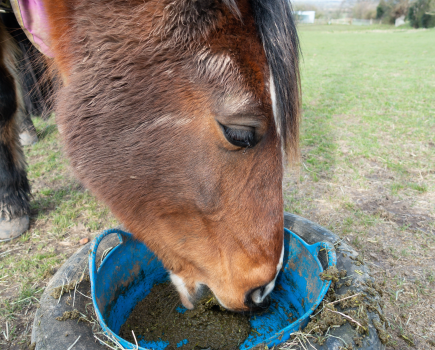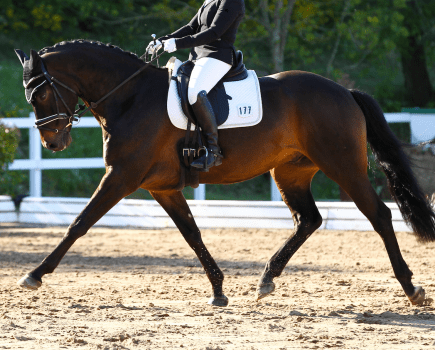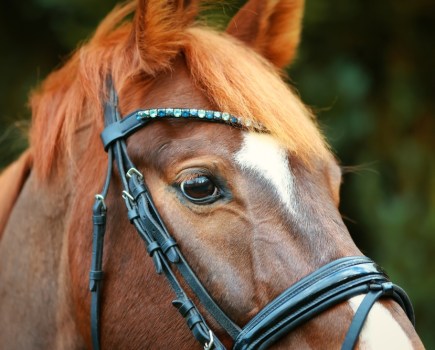A martingale is an item of tack used to control the horse’s head and neck position. It attaches to the girth and bridle to apply pressure should the horse’s head become too elevated.
Riders may choose to use a martingale to prevent their horse from raising their head too high, or tossing and nodding excessively.
There are four types of martingales: a running martingale, standing martingale, bib martingale and an Irish martingale.
Each style fits differently, works in its own way and does a slightly different job, meaning they are more suitable for some horses than others.
A lot of horses wear a martingale when they’re ridden. Do they all actually need to wear them? Possibly not.
As with any tack, a martingale shouldn’t be used as a replacement for skilful riding and correct training.
When they are used, it is important you understand how each style works and which will best suit your horse in order to aid their performance, rather than hinder.
Running martingales

A running martingale is probably the most commonly used martingale. It consists of a neck strap — some attach to the front of the saddle, but not all — and two attachments.
One attachment feeds from the front centre of the horse’s chest, between their front legs and attaches to the girth.
The other attachment also starts at the horse’s chest but splits into two strips of leather, each with a ring at the end. The reins are threaded through these rings.
On some running martingales, rather than two attachments, it is one piece of leather that runs from the reins to the girth, held in place at the front of the chest by the neck strap.
There is a martingale ‘stopper’ on each rein which is usually made of either leather or rubber. These are designed to stop the martingale rings getting too close to the bit and potentially getting stuck.
The stopper is roughly two inches along the rein from the bit.
How it works
A running martingale is used to prevent the horse from lifting their head too high.
If the horse does lift their head, they will feel pressure on the reins and therefore bit when the running martingale kicks in.
Standing martingales
A standing martingale is made up of a neck strap and an attachment that attaches to the girth between the forelegs. However, rather than attaching to the reins, the other end of the attachment runs from the front of the horse’s chest to the noseband.
This creates a fixed point of contact to restrict the horse from lifting their head too high by exerting downward pressure on the horse’s nose through the noseband.
Standing martingales aren’t commonly used these days and it is rare to see one being used. They are thought to be too restrictive on a horse’s head, and certainly mustn’t be used when jumping.
Most riders choose to use a running martingale instead.
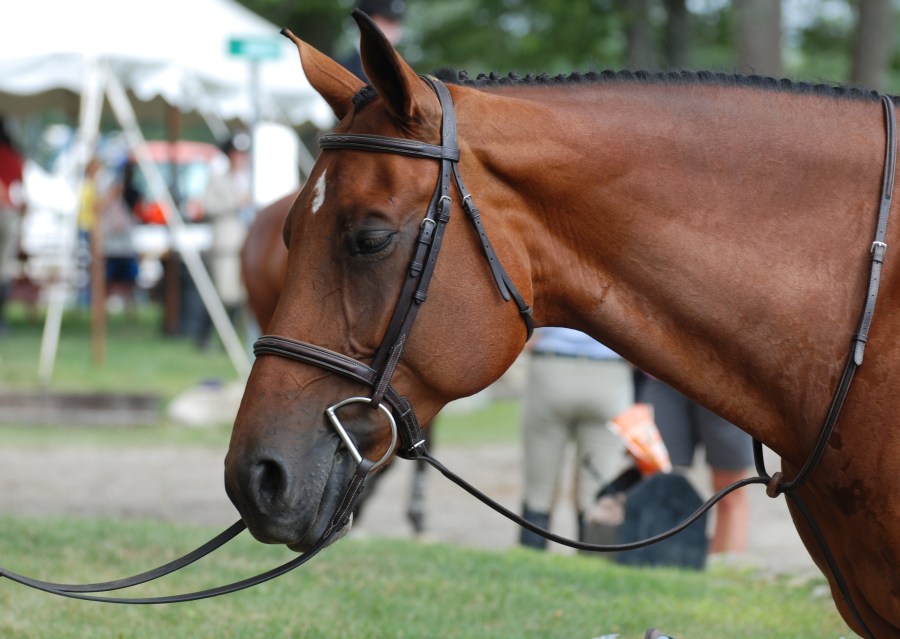
Bib martingales
A bib martingale works in a similar way to a running martingale.
The main difference is that there is a triangular piece of leather with two rings on connecting to the reins instead of two separate straps running from the yoke to the reins.
The yoke is where the neck strap, girth strap and two straps with rings all meet in the middle of the horse’s chest.
It is important to understand that a bib martingale has a stronger affect that a running martingale, and is most often seen being used on racehorses and event horses.
You may also see one on horses in the hunting field.
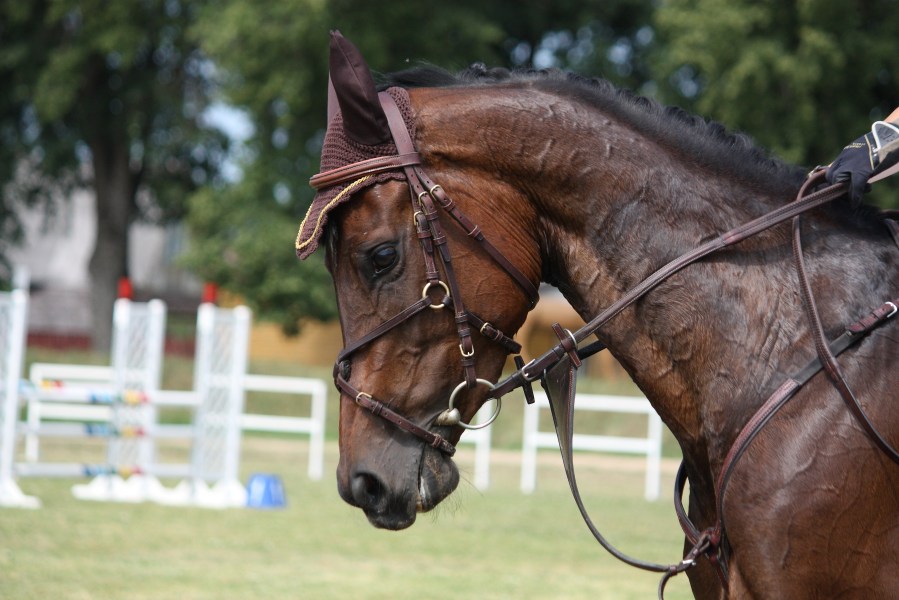
Irish martingales
An Irish martingale is a small leather strap with a ring on each end that the reins are threaded through.
The strap sits on the underside of the horse’s neck and prevents the reins from coming over the horse’s head should the rider fall off.
This is its sole job, and is why an Irish martingale is a common sight on the reins of racehorses.
This type of martingale does not influence the horse’s head carriage.

Fitting a martingale
Martingales come in a range of sizes from pony to extra-full for those horses who have very long necks.
Once you’ve selected the right size, there are three areas to adjust: the length of the neck strap, the length of the girth attachment and the length of the rein or noseband attachment.
Fitting the neck strap
The neck strap should sit comfortably around the horse’s neck without being too tight or hanging down too loose.
You should be able to comfortably fit three fingers between the neck strap and the horse’s neck.
The centre of the neck strap should sit below where the horse’s neck meets their chest.
Fitting the girth strap
The girth attachment should be long enough to run between the horse’s front legs and reach the girth.
Depending on the style of martingale, it will either be clipped on to a D ring or the girth will thread through the end of the martingale attachment.
This part of the martingale should run close to the horse’s chest without applying pressure, and should not droop down between the horse’s legs — the latter is a tripping hazard and could cause serious injury.
Attaching to the reins
On a running martingale, each rein should be threaded through the corresponding ring (ie one on each side of the horse’s neck without the martingale straps twisting or crossing over each other).
Martingale stoppers should be threaded onto the reins first to sit between the bit and the martingale rings to prevent them from becoming caught in the buckles and billets or interfering with the bit rings.
On a standing martingale, the leather should be attached to the back of the noseband, in the centre.
When fitting either martingale, it’s important that the attachments are not fitted so tightly that the horse can’t raise their head at all.
This could cause them to panic or fight the martingale, and potentially cause them (or you) an injury.
There should be no pressure from the martingale put on the horse when their head is lowered or carried in a neutral position. It should only apply pressure when their head is highly elevated in the air.
Who should use a martingale?
A martingale should only be used when needed and it must be fitted correctly in order to do its job properly.
If you are unsure about fitting a martingale for your horse, or you are using one for the first time, always ask a trainer or someone experienced and qualified for advice, as it’s important to get it correct.
A martingale is really only necessary on a horse or pony who has a tendency to carry their head too high.
If you like to have a neck strap and your horse doesn’t require a martingale, consider a breastplate or purpose-made neck strap instead.
Martingale vs breastplate
The main difference between a martingale and a breastplate is that the latter is used to secure the saddle and prevent it from slipping backwards.
It sits around the horse’s chest in a slightly different way to a martingale and attaches to the saddle as well as the girth.
Many breastplates come with attachments for martingales too, which is really useful, and are a popular choice for riders who need to secure their saddle and limit their horse from tossing their head.

